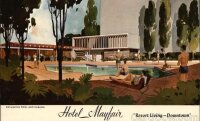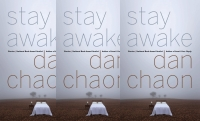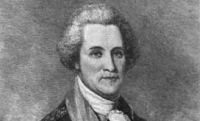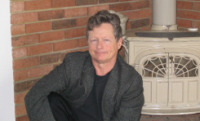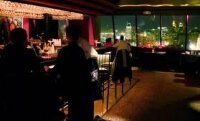Canadian Painter and Mixed Media Artist
Several years ago one of your series Megalopolis caught my attention. I was completely drawn in by the colour and life of the piece. It reminded me of Fritz Lang’s Metropolis, but vibrant and all lit up. Can you tell us a bit about what led you to create that collection?
I wanted to create a series of paintings that were individual yet could be presented as one body of work. I like panoramic installations, and inspired by a road trip from Whitehorse to Halifax, I created a series that represented the in-between spaces, which make up most of Canada. Thanks for bringing that amazing looking Fritz Lang film to my attention, it looks right up my alley.
Your early years were spent in Whitehorse, Yukon. How did the Northern landscape and lifestyle shape you as an artist?
100 Things A Boy Can Make: Courtesy of Artist
The northern landscape, in my lifetime, is inexorably linked to industry. I don’t think it was a conscious decision, but in looking for a voice unique from typical landscape, the shapes that came out of me were environments altered by man. Besides that, the Yukon has a very unique colour palette that still interests me as a painter.
Here on the Canadian west coast we have an awesome expanse of natural beauty but a reliance on resource-based industry as our reason for being here. Does this contradiction make itself known in your paintings?
When I look at my pieces I see that contradiction, not only in the image itself, but in the materials I use to make a painting. It’s difficult to present such commentary when my materials are wood and paper, pigments and minerals. I do my best to create art that is wide open to anyone’s different translation. All that said, I strive to recycle materials and source local products. I don’t think resource extraction is a responsible way to run an economy, but it has become Canada’s identity.
There’s a feeling of compression and explosion in many of your paintings, especially in the collection, “Don’t Cut Off Your Leg Because You Need Red Paint!– or is there? And where did the space travelers in this collection come from?
Compression & explosion….if that’s your take on it, it can’t be wrong. Those space travelers, in my imagination, are tourists marveling at the strange, sad and wonderful places the humans left behind. Some places are dark and compressed, some are open and bright.
Do you believe that the artist can or should be an agent of social change?
Tough enough question!! Yes, I think art can affect an individual’s perspective on the world, and that can be a catalyst for change. But I don’t pretend to have any answers.
Have your feelings about the role of the artist evolved through your collections?
My Grandmother would say so. She says she is so happy to see my work ‘lighten up’ with representations of lovely animals and natural places. She says everyone knows the world is a troubled place so why would they want art that reminds them? I agree with her point, if a person can be uplifted by a painting, that is more useful than being depressed by a painting depicting the poisoned earth. From my perspective, I just go where the paint wants to go!
You work in mixed media and you’ve described your process as intuitive…how does the intuitive process guide you when you choose colors and materials for a new work?
This intuitive process means I don’t plan any pieces. My guiding principle is to start a painting differently every time. Avoiding ‘signatures’. Mixing a colour I’ve never mixed before, collaging something new.
Battery Spritzer
There’s a thriving artistic community here in our small coastal town. How necessary is this sense of community to you as an artist?
A sense of community helps me feel whole. Being excited and challenged by peers improves my work. But honestly I think I would make art anywhere whether in an artistic community or not.
The inevitable “influences” question…did you have a mentor?
I had very influential teachers at the Kootenay School of the Arts. We had very small class sizes and learned from practicing artists. Colour theory with John Cooper and mixed media with Courtenay Andersen were huge steps in my education.
What’s some of the most memorable advice you’ve received about your work and your life?
(I wish I could write it in John Cooper’s voice, a gravelly yell)
- “Don’t be afraid to get LOTS of paint on there!”
- “Go have a beer or a puff, whatever it takes to get cooking!”
(and from Courtenay Andersen)
- “Always work in series, because you can’t explore without moving around”
- “Elevate the mundane”
- “Negate what isn’t working”
I think this advice works in art & in life.
Your most recent collection, “Friendship Station,” seems to be moving into more fable-like territory. Is this likely to be a continuing trend?
I don’t know! But I am really enjoying making these “create-your-own-narrative” paintings. Next I want to go really big and see if I can make a painting that is not a landscape, if possible.
They Are Neighbors
–
Interviewed by Carol Reid.
